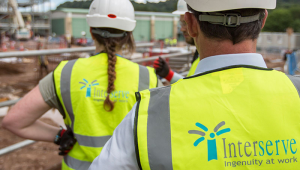Against the backdrop of a growing and ageing population, a sustained period of austerity, intense performance scrutiny and increasing patient empowerment, it’s clear that transformational change is needed in the NHS.
Earlier this month, the publication of the Carter Interim Report reinforced this view and called for the NHS to undergo a cultural change in order to bring about major efficiencies, or risk further losses.
In the report, Lord Carter suggested that investment in digital platforms, improved staff organisation and a better approach to purchasing will make a significant difference to the way the NHS operates and could result in savings of up to £5bn per year.
To make a lasting impact that will be realised throughout the NHS there is a fundamental requirement that it stops acting in silos and instead becomes a holistic hub whereby real efficiencies, in both patient care and procurement, can be made. In order to successfully do this though, the NHS must start investing in new digital processes.
While the Carter Interim Report has reignited interest around having a digitally enabled NHS, this topic has long been the centre of the ‘future of healthcare’ conversation. But due to the challenges that digital systems present, in terms of implementation, training and usage, trusts have often shown a severe lack of enthusiasm in regards to investing time and money into new technologies. Yet everyone recognises that when it comes to investing in digital healthcare there is a strong return on investment, and there are many cases which prove this.
To realise these benefits however, there are essential building blocks which need to be put in place first. And the most fundamental of these building blocks is the unique identification of every product, person and place within the NHS.
GS1 standards provide this unique identification – and importantly they are systems agnostic, enabling the exchange of information between different care providers and systems, no matter where or when a patient receives care.
Adopting GS1 standards will enable a seamless healthcare experience, and shift the current healthcare model to more of an integrated, patient-centric provision of care.
To increase efficiencies and significantly improve the quality and safety of care, GS1 standards should be embedded everywhere along the patient pathway. This has already been recognised in the Department of Health’s eProcurement strategy which was published in late 2014, mandating the use of GS1 standards across NHS Trusts.
This unique identification of products, people and places will help deliver many other benefits too, by making it possible to manage stock better and regain more control over procurement decisions, realising cost efficiencies in terms of wider operational processes. In fact, the Carter report couldn’t be clearer: it states that the introduction of GS1 standards will allow every NHS hospital in England to save an average up to £3m each year, while improving patient care.
One instance where we can see that unique identification has had a significant impact is at the Derby Teaching Hospitals NHS Foundation Trust. This trust has already implemented many of the recommendations found in the Carter report ahead of its publication, becoming a leader in digital healthcare. Implementing GS1 standards across the trust has enabled them to identify areas which need more focus as well as manage priorities.
Most importantly, the trust can also measure improvements around patient safety, which in itself makes a very compelling case for the NHS to truly invest in digital technology.
The Carter report represents a fundamental shift to integrated, patient-centric care provision, through the better integration of technology into the health service. Silos across health and social care services prevent a coordinated patient-centric approach, also wasting time and money in the long-term. Trusts should not be deterred by the new challenges that this cultural change presents, but instead use the opportunity to become truly digital and realise the real, tangible benefits that can be gained. Better use of technology and data is a prerequisite for supporting and enabling the key developments needed to reshape the health and care system.
As John Warrington, deputy director of procurement policy & research at the Department of Health, recently said: “GS1 standards implementation is no longer a good thing to do. It’s essential for delivering the NHS five-year forward view efficiencies.”



















